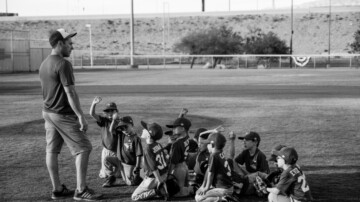Locking in High-Level Commitments
You work hard to get people’s attention. You hone your story and shout it from the rooftops. You market your cause, organization and events using an array of tools, including email, social media, direct mail, even cold calls. Then, if you’ve done a good job, it happens: you’ve captured someone’s interest… Now what? Turning attention into involvement is a task in itself and a link in the fundraising chain upon which all your efforts are dependent. And doing so when you’re asking for high-level commitments in terms of time, money and endurance makes the challenge twice as hard.
Enter the general interest, or “kick-off” meeting. This opportunity, while not for everyone, can be critical when the ask is significant and the leap from knowing to doing is a lot farther than simply sending in a check or manning a fundraising booth. In fact, getting people together for this figurative “firm handshake” is a necessity when it comes to ensuring a participation in these kinds of events.
Success in implementing this tool is, of course, dependent on a lot of “Meeting 101” principles, particularly on the preparation front. This includes strategically choosing your venue, prepping the space, sending email reminders and making sure participants know what they need to bring for registration. But beyond the basics (and the PowerPoint), there are some very important “human” aspects to these meetings to keep in mind.
Before you even get started, consider that this is where your organization—and importantly, its mission—first presents its living face to the people you want to engage. They’re going see and meet you and your volunteers, as well as others like them who are exploring the same possibilities to exact a certain change in the world. Take advantage of this by encouraging networking and interaction as best you can before you begin a formal presentation. Ask people to share with you and with each other why they’re there. What compelled them to look into your cause and pursue this kind of event? Why are they willing to consider taking on such a challenging level of commitment? Facilitating this kind of exchange allows the group to escalate the sense of importance of what they’re doing and gives your presentation weight before you utter your first word.
This humanization process continues during your presentation. Remember that people ultimately develop loyalty to people, and not just a cause. In kick-off meetings you act as the face of your mission and event, and for these types of commitment scenarios, you’re asking a lot. Make sure you present as confident, committed and effective. How you work the room is critical—your knowledge of names, faces, information you gathered in discussions prior to the meeting, can come into play here. It is from this posture that you’ll do something very important: ask your audience to make that high-level commitment—to sign on the dotted line, as it were. The quality of your presence can make or break their decision whether or not to take that difficult step.
Remember too, that presentations like this are more than an opportunity to broadcast messaging and information—when done right they’re interactive events, where participants have the chance to ask questions and get answers. Be aware that people ask questions for reasons beyond simply soliciting information. Sometimes they just want to be heard or make their presence known. Sometimes they want to state an opinion. In any case, crate and use this opportunity to engage while showing your knowledge and resolve. Be specific and transparent and you’ll ease reservations that may, for some, be the final obstacle to making a commitment.
Finally, what happens after your presentation is as important as what happens during. From the final ask—to commit and sign and register before they leave—to your follow-up emails, your presentation now becomes the pivot point from which people will make the jump from having an idea to making something difficult into a personal reality. Don’t present and disappear. Follow-up personally and make sure participants remain committed and feel good about their decision. If you’ve succeeded, they’re family now—be sure to treat them that way.
For more details on how to successfully conduct and take advantage of general interest meetings, download Event 360’s Appeals to Participation: Four Steps to Engaging Your Audience.
Shawn Supers has been inspiring audiences to make commitments since her first public speech when she was 12 years old. She is a Senior Fundraising Coordinator at Event 360, and hosts informational “Get Started Meetings” for walkers in the Washington, DC area.
Gina Guerreso is a Field Fundraising Coordinator for Event 360. Since 2004 she has worked personally with hundreds of walkers, encouraging and empowering them to meet their event fundraising goals and raise many thousands of dollars.
 To learn more about event fundraising, visit the Event 360 blog or sign up for our monthly newsletter.
To learn more about event fundraising, visit the Event 360 blog or sign up for our monthly newsletter.


